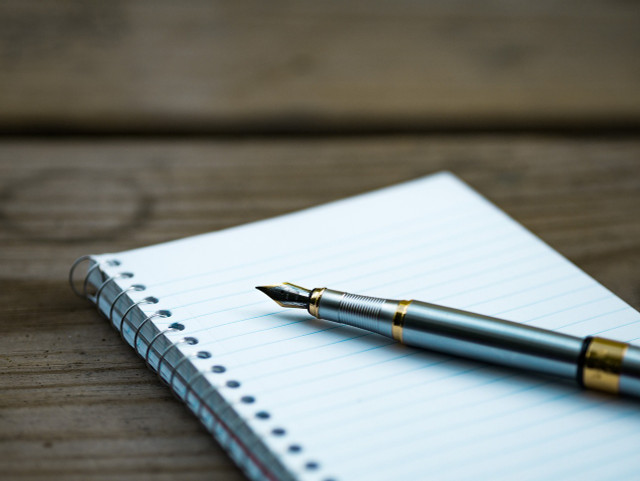
According to the author Neil Pasricas, just two minutes in the morning should be enough to get through the day with more motivation and satisfaction. For this he recommends only three short but crucial sentences.
We have constant access to news from all over the world via social media, push notifications, but also daily newspapers and news programs. These often report negative events such as natural disasters, famines, wars, diseases or violent crimes. There are also annoyances, disputes and problems from your own everyday life.
It is no coincidence that we often focus more on such negative events, feelings and news than on positive ones, but is due to the so-called “negativity bias”: a widespread human tendency to be influenced by the negative rather than the positive.
Sometimes it can feel like a tide of negativity is sweeping over you, and that can lower our quality of life in the long run. However, with a short morning routine, as recommended by author Neil Pasricas, you can lay the first building blocks to counteract this.
The focus on the negative
The term “negativity bias” describes the phenomenon that our brain reacts much more strongly to negative than to positive circumstances. This is why we are more likely to remember insults than compliments, for example, or shocking news is more likely to grab our attention. The focus on the negative was vital for our ancestors in order to recognize dangers at an early stage.
Today we are no longer regularly threatened by predators or at the mercy of natural forces, so that the negativity bias has lost its original function. Today he has rather a number of negative consequences.
Among other things, it leads to:
- Skepticism and mistrust of our fellow human beings
- increased anxiety
- Difficulty accepting constructive criticism
- a more difficult successful cooperation with colleagues
In this way, the focus of negativity in our brain can severely limit our ability to perform at work, our friendships and relationships, and our overall well-being. Against this background, Neil Pasrichas developed a concept to help people start the day more positively, more focused and happier.
Step 1: “I focus on…”

(Photo: CC0 / Pixabay / Pexels)
Neil Pasrichas describes on his blog how overwhelmed and stressed he often felt by his long to-do list. Does that sound familiar to you?
- Then Pasrichas recommends sitting down every morning and writing down the phrase “I am concentrating on…”
- Then, from your long to-do list, write down just a few things you want to get done that day. Be as precise as possible. So don’t write something like “work on report XY” but write “write 500 words”. Instead of “doing sports again” write “30 minutes of exercise”.
- Also, be careful not to make the list too long. You should only write down the things that you can realistically do that day.
According to Pasrichas, this can help you prevent overwhelm and structure your day better. So you don’t have to constantly ask yourself what you could do next throughout the day, you have already formulated concrete goals. This part of the morning routine is therefore also an ideal tool for self-management.
Step 2: “I am grateful for…”
Next, to consciously train yourself to focus more on positive events, Pasrichas recommends writing down and adding another sentence each morning: “I am grateful for…”
Also, be as precise as possible. Don’t just write “for my job, my friends and my apartment”, but rather something like “for the healing conversation with my girlfriend”, “for the quiet lunch break in the sun” or “for the helpfulness of my colleague yesterday”. .
If you do this gratitude exercise every day, you will learn to be more aware of positive events and not forget them in the midst of a flood of negativity. According to Spektrum, there is already research showing that increased gratitude leads to more happiness and more fulfilling relationships and can even reduce the risk of depression, addiction or burnout. The good news: We can learn gratitude in the long term with just a little investment of time. It is therefore not always just the result of happiness and well-being, but much more the cause.
Step 3: “I’ll let go…”

(Photo: CC0 / Pixabay / iqbalnuril)
As the last point of the morning routine, Neil Pasrichas recommends writing down the things we want to let go of every morning. Here you can write down all the things that are bothering you, for example the conflict with friends, a strange comment or that you simply forgot an important meeting. So you write these things off your chest and visualize your own willingness to let go of these things.
Because according to the qualified psychologist Dr. Doris Wolf, the process of letting go always begins in our heads. As a result of the short morning routine, we can learn acceptance and make peace with our own mistakes or the behavior of those around us.
Pasrichas writes down his thoughts on these three aspects every morning. He puts the diary for it on his dessert table. The author himself emphasizes that this short morning routine is not a panacea. However, she has already significantly improved his life.
Read more on Techzle.com:
- Resilience: How to train your mental resilience
- Whining Fast: More happiness without nagging
- Frugality: This is how you live happier